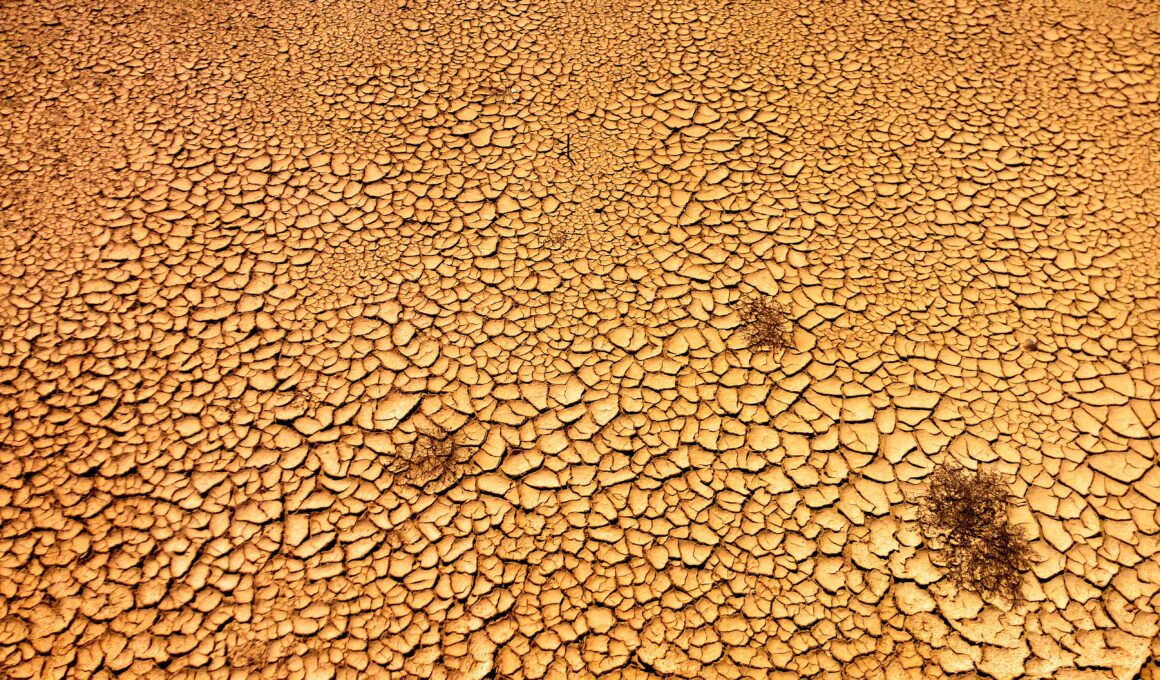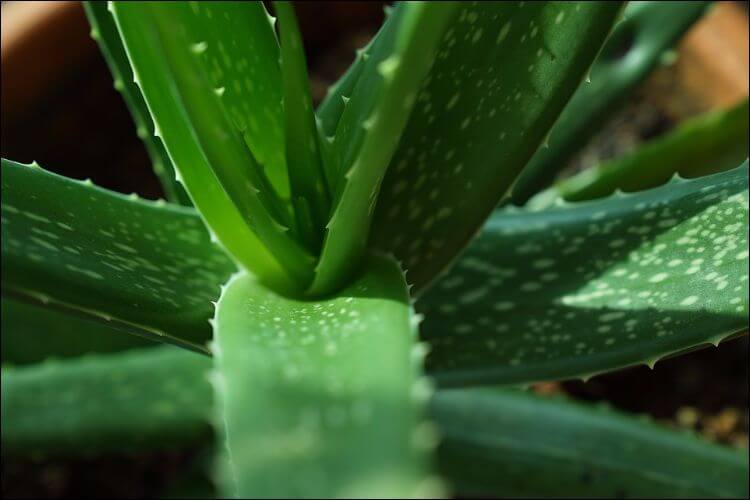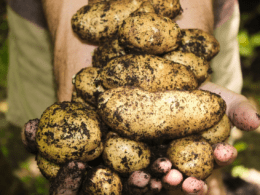Quick Summary
- Assess water accumulation in the yard and understand the importance of addressing it.
- Implement various methods to improve soil drainage, such as using organic amendments, aerating the soil, and installing drainage systems like French drains or subsurface drains.
- Redirect downspouts and gutters to prevent water pooling in the yard, and consider installing a dry well to effectively channel water away from the yard.
- Regularly maintain and monitor drainage systems to ensure their effectiveness and prevent clogging or damage.
Assess the Water Accumulation Problem
Now let’s take a moment to assess the water accumulation issue in your yard so we can start turning that soggy mess into a beautiful oasis in no time! Assessing water accumulation is crucial to understanding the extent of the problem and finding the best solution to dry up your yard. Start by identifying the areas in your yard where water tends to collect. Look for signs of standing water, such as muddy patches or waterlogged soil. This will help you determine the severity of the issue and the necessary steps to take. Once you’ve assessed the water accumulation, it’s time to focus on soil improvement. Poor drainage is often caused by compacted soil, which prevents water from soaking into the ground. To improve the soil, consider aerating it by using a garden fork or hiring a professional. This will help loosen the compacted soil and allow for better water absorption. Additionally, adding organic matter, such as compost or peat moss, can also improve soil structure and drainage. Remember, assessing water accumulation and improving the soil are essential steps in drying up your wet yard. By understanding the problem and taking the necessary measures, you’ll be on your way to transforming your yard into a safe and enjoyable space.Improve Soil Drainage
First, let’s focus on enhancing the soil’s drainage to transform your waterlogged yard into a thriving outdoor oasis. Improving soil drainage is crucial to ensure that excess water doesn’t accumulate and cause further damage. Here are three steps you can take to improve soil quality and promote better drainage:- Use organic amendments: Adding organic matter to your soil can help improve its structure and drainage capabilities. Consider incorporating compost, leaf mold, or well-rotted manure into the soil. These organic amendments will not only improve drainage but also provide essential nutrients for your plants.
- Aerate the soil: Compacted soil can worsen drainage issues. Aerating the soil, either by using a garden fork or a mechanical aerator, will create small holes that allow water to penetrate the soil more easily. This will help prevent the formation of waterlogged areas in your yard.
- Install drainage systems: In severe cases, where the soil is poorly draining, installing a drainage system can be a practical solution. French drains or subsurface drains can effectively redirect excess water away from your yard, preventing water accumulation and potential hazards.
Install a French Drain System
To transform your waterlogged outdoor space into a thriving oasis, consider installing a French drain system that effectively redirects excess water and prevents potential hazards. French drain installation offers numerous benefits, making it a smart choice for those seeking safety and improved soil drainage. A French drain system is designed to alleviate water accumulation by creating a channel that redirects water away from your yard. This ensures that excess water doesn’t seep into your home’s foundation, causing structural damage. By installing a French drain, you can prevent potential hazards such as flooding, erosion, and water damage. One of the main advantages of a French drain system is its ability to effectively remove excess water from your yard. The drain is typically constructed using a perforated pipe that’s surrounded by gravel or rock. This allows water to easily flow into the pipe, which then carries it away from your yard. As a result, you can enjoy a dry and safe outdoor space. Furthermore, a French drain system is low-maintenance and durable, providing long-lasting results. Once installed, it requires minimal upkeep, allowing you to focus on other aspects of your yard. Additionally, the materials used in the construction of a French drain are designed to withstand the elements, ensuring its effectiveness for years to come. Installing a French drain system is a practical solution to combat a wet yard. The benefits of improved soil drainage and the prevention of potential hazards make it an excellent choice for those seeking a safe and dry outdoor space. Consider investing in a French drain to transform your yard into a thriving oasis.Create a Rain Garden
Consider transforming your outdoor space into a lush and vibrant oasis by creating a rain garden. Not only will it help to dry up your wet yard, but it also brings numerous benefits to your home and the environment. A rain garden is a specially designed area that collects and filters rainwater, preventing it from becoming stagnant and causing further water buildup in your yard. Here are five reasons why you should consider creating a rain garden:- Flood prevention: A rain garden helps to absorb excess rainwater, preventing it from pooling and causing flooding in your yard.
- Water filtration: By collecting rainwater, a rain garden filters out pollutants and prevents them from entering local water sources.
- Wildlife habitat: Rain gardens create a habitat for beneficial insects, birds, and other wildlife, enhancing biodiversity in your yard.
- Improved soil quality: The plants in a rain garden help to improve soil structure and prevent erosion, making your yard more stable and resilient.
- Low maintenance: Once established, rain gardens require minimal maintenance, saving you time and effort.
Redirect Downspouts and Gutters
To redirect downspouts and gutters, start by installing downspout extensions to carry water away from your yard. This will help prevent water from pooling and causing a wet yard. Additionally, make sure to position your gutters in a way that diverts water away from your yard, ensuring that it flows towards a suitable drainage area.Install Downspout Extensions
Installing downspout extensions can help channel water away from your yard, preventing it from becoming saturated and creating a muddy mess. When it comes to downspout maintenance, extending the downspouts is a crucial step. By doing so, you can direct water farther away from your yard, reducing the risk of water pooling and causing damage. It is essential to choose the right extension length to ensure proper drainage. Additionally, consider alternative drainage methods such as French drains or dry wells to further divert water away from your yard. Regularly inspect the extensions for any clogs or debris buildup, as this can hinder proper water flow. By taking these steps, you can effectively manage water runoff and keep your yard dry and safe.Position Gutters to Divert Water Away from the Yard
Make sure your gutters are positioned properly to guide water away from your yard and prevent any potential flooding. Proper positioning of gutters is crucial in rainwater diversion to keep your yard dry and safe. When installing gutters, ensure that they’re sloped towards the downspouts, allowing water to flow freely and efficiently. This will prevent any accumulation of water that could lead to waterlogged soil and potential damage to your yard. Additionally, make sure that the downspouts are directed away from your yard and towards a suitable drainage area, such as a storm drain or a dry well. By positioning your gutters correctly, you can effectively divert rainwater away from your yard, reducing the risk of a wet and flooded yard.Install a Dry Well
To install a dry well in your yard, you’ll need to dig a hole for it. Make sure the hole is deep enough to accommodate the tank and below the level of the surrounding ground. Once the hole is ready, fill it with gravel to create a drainage bed. Carefully place the perforated tank on top.Dig a Hole for the Dry Well
Once you’ve selected the ideal spot, you’ll want to start digging a hole for the dry well in your yard. Here are the steps to ensure a safe and effective excavation:- Mark the location: Use stakes and string to mark the area where you’ll be digging. Make sure it’s away from any utility lines or trees.
- Call for utility marks: Before you start digging, call your local utility company to mark any underground lines. This will prevent any accidents or damage during excavation.
- Start digging: Use a shovel or an excavator to dig a hole that’s wide and deep enough to accommodate the dry well. Follow the measurements provided in the dry well installation instructions.
Fill with Gravel and Install a Perforated Tank
After digging the hole for the dry well, it’s time to fill it with gravel and install the perforated tank for efficient drainage. This step is crucial in ensuring that water is effectively directed away from your yard, preventing any potential safety hazards. The benefits of using a perforated tank are numerous. Firstly, it allows for better water distribution, as the perforations evenly distribute water throughout the tank. This prevents any concentration of water in one area, reducing the risk of flooding. Secondly, the gravel installation techniques play a vital role in the overall effectiveness of the dry well. By placing a layer of gravel at the bottom of the hole, you create a sturdy base for the tank, ensuring stability and proper drainage. Additionally, filling the remaining space around the tank with gravel promotes better water absorption, preventing any overflow or pooling. By following these steps, you can successfully dry up your wet yard and create a safer outdoor environment.Can Weed-Free Flower Beds Help in Preventing a Wet Yard?
Keeping weed-free flower beds is essential for preventing a wet yard. By following some effective weed-free flower bed tips, such as regular maintenance, mulching, and proper watering, you can ensure that excess water is efficiently absorbed by the flowers, reducing the risk of a soggy yard. Embrace these tips for a healthier and drier outdoor space.
Can I Use Miracle Grow to Help Dry Up a Wet Yard?
Applying miracle grow frequency to a wet yard may not be the most effective approach. Miracle Grow is a fertilizer meant to nourish plants, and using it on a wet yard may not necessarily help dry it up. It is advisable to focus on proper drainage solutions and understanding the underlying cause of the excessive moisture to effectively address the issue.
Grade the Yard for Proper Slope
First, make sure your yard is properly graded to ensure proper water drainage. This is crucial for preventing water from pooling and causing damage to your yard and home. Start by assessing the current slope of your yard. Ideally, you want a gentle slope that allows water to flow away from your house and towards a drainage area. If your yard is flat or has areas that are lower than others, you may need to bring in soil to build up the low spots and create a more even slope. Additionally, consider improving soil fertility by adding organic matter such as compost or topsoil. This will not only help with water absorption but also promote healthy plant growth. When it comes to landscaping options, there are alternatives that can help with water drainage. Consider using permeable pavers or gravel in certain areas of your yard. These materials allow water to seep through, reducing runoff and preventing water from accumulating. Another option is to create rain gardens or swales, which are shallow depressions that collect and filter water. These features not only improve drainage but also add aesthetic appeal to your yard. By properly grading your yard and exploring alternative landscaping options, you can effectively dry up a wet yard and create a safer environment for you and your loved ones. Remember to consult with professionals if needed, as they can provide expert advice tailored to your specific situation.Maintain and Monitor Drainage Solutions
To ensure the effectiveness of your drainage solutions, it’s important for you to regularly maintain and monitor them. Proper drainage maintenance is crucial in keeping your yard dry and safe. Here are some key steps to help you maintain and monitor your drainage solutions effectively.- Firstly, regularly inspect your drainage systems for any signs of clogging or damage. Remove any debris or blockages that may hinder the flow of water. This will help prevent water from pooling in your yard.
- Next, monitor the water flow during heavy rainfall or when using irrigation systems. Look out for any areas where water is not draining properly and address the issue promptly. Adjusting the slope or adding additional drainage solutions may be necessary.
- Additionally, check the condition of your gutters and downspouts. Make sure they’re clear of leaves and other debris, and that they’re directing water away from your yard.
- Lastly, consider installing a drainage monitoring system. This can help you keep track of water levels and flow rates, allowing you to take action before any flooding occurs.








